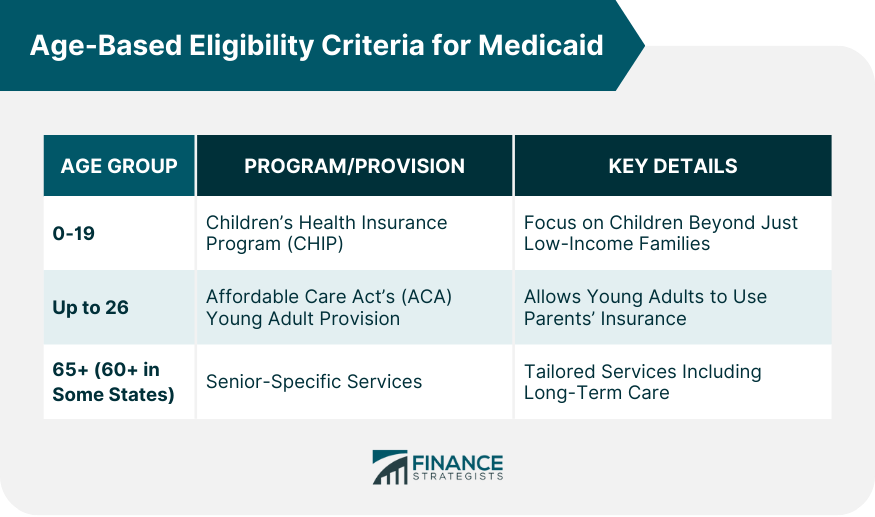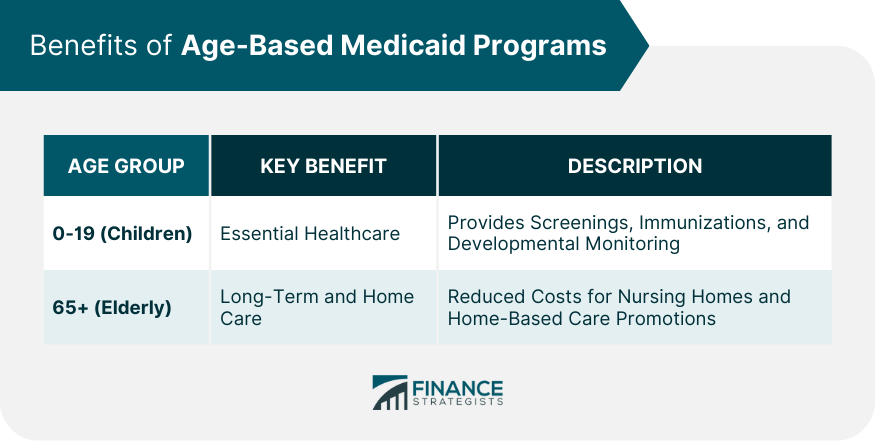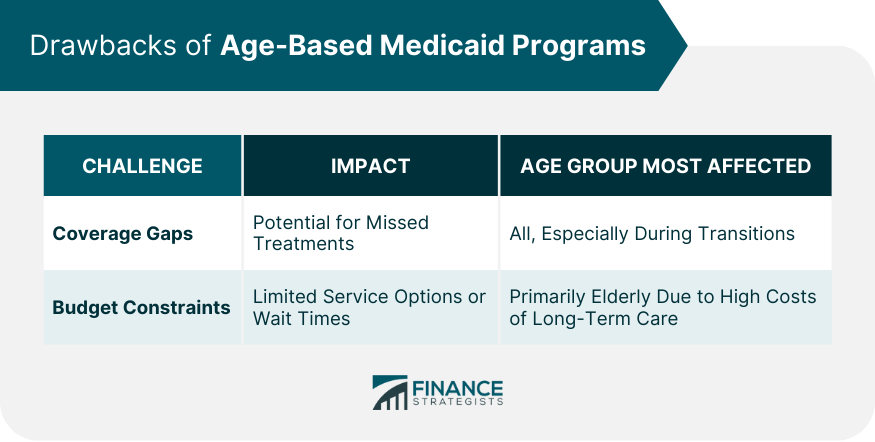The age criteria for Medicaid is a blend of federal guidelines and state-specific regulations that determine when individuals qualify for health benefits. Essentially, Medicaid is structured to support various age brackets, from newborns and children to the elderly. Depending on the state, some programs even begin catering to individuals as young as 60. This age segmentation ensures that specialized healthcare services, from pediatric treatments to geriatric care, are efficiently delivered to those who need them most. Age plays a vital role in the Medicaid system. This criterion ensures that specific age groups, especially those at vulnerable stages of life, get the right healthcare attention. Early childhood and advanced age are periods when individuals have unique health demands or are at higher risk for health complications. Medicaid, by considering age as a determining factor, can allocate resources more effectively. For instance, resources are set aside for the elderly who might need more intensive treatments or long-term care, while children benefit from pediatric services and preventive healthcare measures. Medicaid's comprehensive approach addresses the healthcare needs of various age demographics. For children up to age 19, programs like the Children’s Health Insurance Program (CHIP) are pivotal. This program isn't solely for low-income families but extends to ensure that a broader range of children get medical services. For young adults, the ACA's expansion has been groundbreaking. It allows many in this age group, up to 26 years old, to stay under their parents' insurance, bridging the gap between childhood and becoming self-reliant. For the elderly, Medicaid is often available to those aged 65 and older. Yet, some states offer services to those starting from age 60 or 62, catering to their unique healthcare needs. Medicaid is designed to adapt to the age of its beneficiaries. As they grow older, individuals might shift from one program to another. A child covered by CHIP, for instance, will eventually transition out and could fall under the young adult category, facilitated by the ACA's provisions. Such mechanisms aim to minimize healthcare service disruptions. However, these shifts can bring challenges. For instance, as individuals enter their senior years, they might encounter different financial eligibility thresholds, possibly nudging them to explore other Medicaid services tailored to older age groups. Medicaid's focus on children ensures they get timely medical interventions, fostering a healthier community. Programs like CHIP offer children regular screenings, monitoring their growth, development, and general health. From monitoring vision and hearing to ensuring they're achieving developmental milestones, these screenings are integral. Moreover, Medicaid offers children a pathway to vital immunizations and wellness visits. These services not only shield children from prevalent diseases but also provide healthcare practitioners a platform to advise families on various aspects of child health. For the elderly, Medicaid is more than just a health insurance program; it's often a lifeline. The soaring costs of nursing home care are substantially reduced or covered by Medicaid, enabling more seniors to access quality care. It provides solace to families, ensuring their elderly members are well taken care of. Beyond institutional care, Medicaid shows its flexibility by promoting home and community-based services. Such initiatives let seniors receive care in familiar environments, fostering emotional well-being and ensuring they're integrated into their communities. One challenge with age-based Medicaid is the potential coverage gaps, especially during transitions between age categories. For instance, a person moving from a young adult program might find a coverage gap until they fit into the adult or senior bracket. Such gaps can lead to missed treatments, medications, or even regular check-ups, which could have long-term implications. Furthermore, Medicaid requires beneficiaries to undergo periodic eligibility reassessments. Delays, or not meeting the criteria during these checks, can lead to a temporary discontinuation of services. Medicaid's vast network and comprehensive care come with budgetary challenges. These become evident when looking at elderly care, where the rising costs of long-term solutions strain resources. This strain can result in waiting lists, reduced service options, or shorter durations for specific treatments. Also, the financial model of Medicaid means not all healthcare providers accept its beneficiaries, owing to its reimbursement rates. This restriction can translate to fewer specialist options, extended waiting periods, and sometimes even travel to access the required care. For those looking to benefit from Medicaid, understanding the eligibility criteria is vital. It's crucial to recognize that while federal guidelines set a standard, each state can add its own layers, leading to variations. Being well-versed with state-specific rules can streamline the application process. Moreover, periodic eligibility reviews are part and parcel of Medicaid. Being aware of the timelines, required documentation, and overall process can make these reviews more manageable, ensuring sustained access to healthcare. Consistent Medicaid coverage demands proactive measures from beneficiaries. This includes understanding when they might transition from one age-based program to another and preparing accordingly. Knowledge of required paperwork, application processes, and other necessities can make these shifts smoother. Moreover, being engaged and active in periodic reassessments, keeping track of timelines, and ensuring all paperwork is updated can prevent any inadvertent lapses in coverage. Medicaid's age-based structure plays a pivotal role in ensuring varied age groups, from children to the elderly, receive tailored healthcare services. By segmenting eligibility based on age, Medicaid can provide specialized care like pediatric treatments for children and long-term solutions for seniors. However, potential gaps during transitions and budget constraints present challenges that beneficiaries need to navigate. Programs such as CHIP for children and provisions under ACA for young adults bridge vital healthcare gaps. Meanwhile, for seniors, Medicaid has become an essential lifeline, especially with the rising costs of elderly care. To make the most of these offerings, beneficiaries must stay informed about eligibility criteria and be proactive in maintaining continuous coverage. Overall, understanding and navigating the age specifications in Medicaid ensures optimized healthcare access across life stages.At What Age Can Someone Receive Medicaid?
How Age-Based Medicaid Programs Works
Age-Based Eligibility Criteria

Changing Eligibility Over Time
Benefits of Age-Based Medicaid Programs
Providing Essential Healthcare to Children
Supporting Elderly Populations

Drawbacks of Age-Based Medicaid Programs
Potential Gaps in Coverage
Budget Constraints and Service Limitations

Navigating Age-Related Medicaid Transitions
Understanding Eligibility Criteria
Maintaining Continuous Coverage
Conclusion
Age to Receive Medicaid FAQs
Children can be eligible for Medicaid from birth. Some programs, like the Children’s Health Insurance Program (CHIP), cater to children up to age 19.
Yes, under the Affordable Care Act (ACA) provisions, many young adults can stay on their parents' Medicaid insurance up to the age of 26.
Typically, seniors aged 65 and older are eligible for Medicaid. However, some states offer specific services to those starting from age 60 or 62.
As beneficiaries age, they might transition from one Medicaid program to another, like moving from CHIP as children to ACA provisions as young adults, and eventually to senior-specific services.
Yes, potential coverage gaps can arise, especially during transitions between age categories, like moving from a young adult program to an adult or senior bracket.
True Tamplin is a published author, public speaker, CEO of UpDigital, and founder of Finance Strategists.
True is a Certified Educator in Personal Finance (CEPF®), author of The Handy Financial Ratios Guide, a member of the Society for Advancing Business Editing and Writing, contributes to his financial education site, Finance Strategists, and has spoken to various financial communities such as the CFA Institute, as well as university students like his Alma mater, Biola University, where he received a bachelor of science in business and data analytics.
To learn more about True, visit his personal website or view his author profiles on Amazon, Nasdaq and Forbes.











